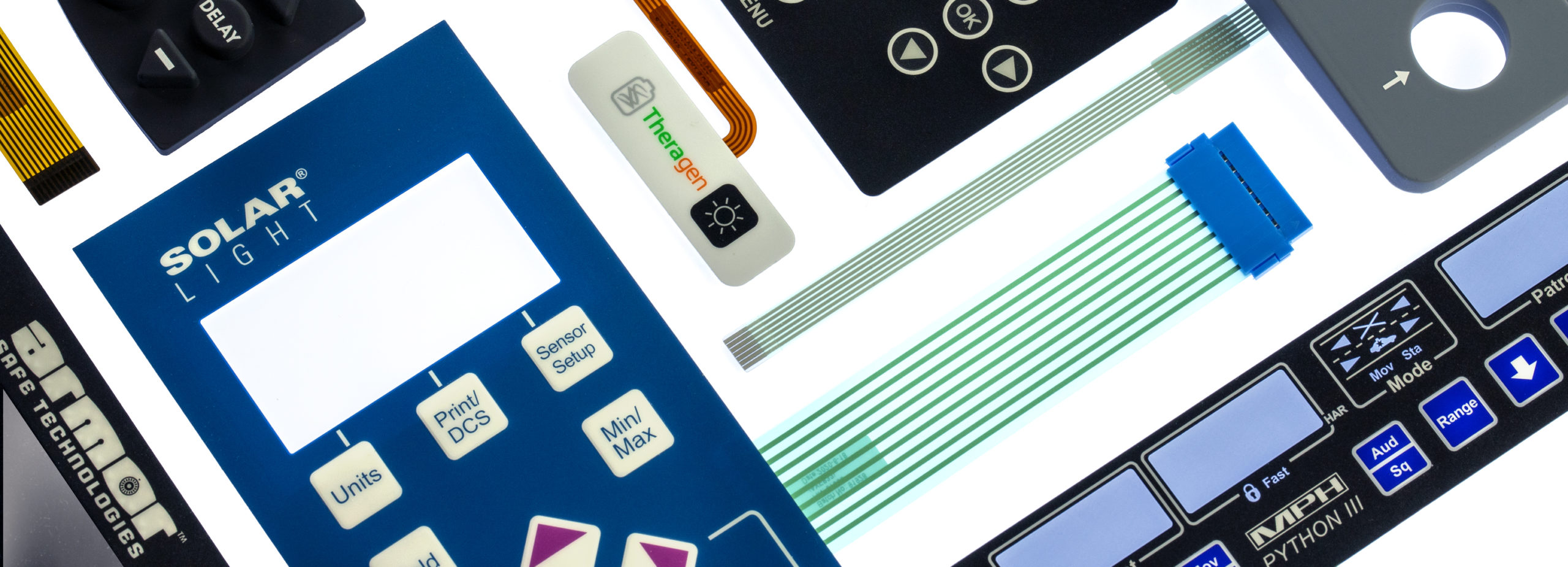The Importance of Membrane Switches in Building Easy-to-Use Interfaces
The Importance of Membrane Switches in Building Easy-to-Use Interfaces
Blog Article
Why Membrane Changes Are Crucial for Resilient Control Equipment
Membrane switches play an essential function in making certain the durability and reliability of control systems across various industries. Their distinct building allows them to withstand difficult environmental elements such as humidity, temperature extremes, and physical wear. This resilience not only extends the lifespan of the systems they serve however likewise lessens maintenance needs. As we discover the diverse advantages of membrane switches, it ends up being noticeable that their value goes beyond plain performance, influencing individual experience and operational efficiency. What further effects do these qualities hold for the future of control system design?
Summary of Membrane Layer Switches
Membrane switches are functional and reputable components typically made use of in various digital control systems. The visuals overlay offers both practical and aesthetic design, while the spacer layer makes sure that the buttons are activated just when pushed.
Membrane layer switches are typically favored in applications calling for a compact and lightweight style, making them excellent for handheld devices, clinical tools, and industrial equipment. They can be customized to meet particular individual needs and can include various functions such as backlighting, responsive feedback, and several shades. Membrane switches are resistant to dust, wetness, and pollutants, making them ideal for settings where longevity is essential.
Advantages of Resilience
In many applications, the resilience of membrane layer switches over deals considerable benefits that improve their general performance and reliability. These switches are developed to hold up against harsh settings, making them ideal for usage in requiring problems such as high moisture, extreme temperatures, and exposure to chemicals. Their durable building and construction assists to stop damage from physical impact, guaranteeing lasting performance and lessening the requirement for frequent substitutes.
Furthermore, membrane switches are immune to damage, which is important in applications where regular interaction takes place. This resilience translates to lower upkeep expenses, as organizations gain from minimized downtime and fewer solution disruptions. Furthermore, the encapsulated layout of membrane layer switches secures inner components from dust and moisture access, additional contributing to their life-span.
Another benefit is their capability to maintain constant performance gradually. With a high tolerance for mechanical anxiety, these switches protect their tactile comments and electric integrity, making certain individual contentment. Eventually, the durability of membrane switches over not only improves functional efficiency yet also promotes self-confidence in their reliability, making them a favored selection for control systems across different fields.
Applications in Various Industries
Long lasting control systems employing membrane layer buttons discover extensive applications throughout a series of markets, each gaining from the unique attributes these buttons supply. In the medical sector, membrane buttons are vital for devices such as person screens and analysis equipment, where dependability and simplicity of cleaning are vital. Their resistance to moisture and impurities ensures they keep performance in clean and sterile their explanation atmospheres.
The auto industry leverages membrane switches for dashboard controls and infotainment systems, where they supply streamlined, inconspicuous user interfaces that boost user experience. These switches are also developed to endure rough problems, consisting of direct exposure to severe temperature levels and resonances.
In commercial setups, membrane layer buttons are frequently made use of in equipment control board, using responsive comments and durability necessary for high-usage applications. Their ability to resist chemicals makes them ideal for making settings look here where spills and impurities are constant.

Consumer electronic devices, such as cooking area home appliances and push-button controls, also utilize membrane layer buttons for their adaptability and cost-effectiveness. In general, the adaptability and durable nature of membrane layer changes make them essential throughout numerous industries, guaranteeing reliable procedure and longevity in control systems.
Layout and Aesthetic Appeal
While capability is paramount, the design and aesthetic allure of control systems equipped with membrane layer buttons play a vital function in user involvement and total experience (membrane switch). The aesthetic layout of these buttons can considerably affect user understanding and communication. A properly designed membrane layer switch improves the beauty of the device, making it a lot more appealing to individuals and fostering a link between the individual and the product
Membrane layer switches over use a terrific deal of versatility in design, enabling manufacturers to personalize graphics, shades, and textures to line up with brand name identity and item aesthetic appeals. Using dynamic shades and distinctive patterns can attract focus, while tactile comments can enhance the user's communication with the tool. Additionally, the capability to incorporate LED indicators and backlighting into the membrane layer switch design supplies both useful and aesthetic advantages, boosting visibility and use in various environments.

Enhancing Customer Experience

Furthermore, membrane switches can be customized to incorporate graphical interfaces, enhancing usability by providing details in a clear and user-friendly way (membrane switch). This modification can include symbols, labels, and color coding that guide customers via facility performances easily. In addition, their versatility enables combination in various environments, making sure constant efficiency whether in industrial equipment or consumer electronics
The resilience of membrane buttons likewise plays an essential role in customer experience. By holding up against rough problems and extended usage, these switches reduce the possibility of system failings, therefore promoting reliability and user confidence. Eventually, the strategic use membrane layer changes not just raises capability however additionally considerably improves individual communication with control systems, making them an essential part in contemporary design.
Verdict

Report this page